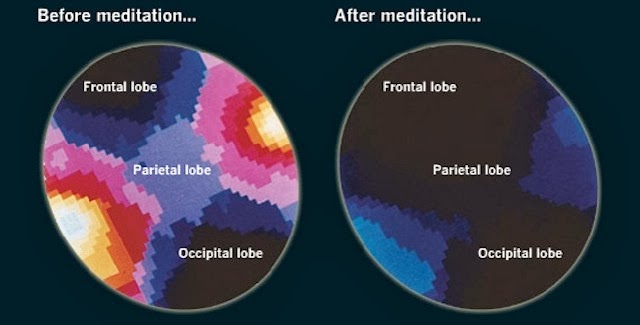What is Meditation?
There are different ways to meditate, and since it’s such a
personal practice there are probably more than any of us know about. There are
a couple that are usually focused on heavily in scientific research, though.
These are focused-attention, or mindful meditation, which is where you focus on
one specific thing—it could be your breathing, a sensation in your body or a
particular object outside of you. The point of this type of meditation is to
focus strongly on one point and continually bring your attention back to that
focal point when it wanders.
The other type of meditation that’s often used in research
is open-monitoring meditation. This is where you pay attention to all of the
things happening around you—you simply notice everything without reacting.
What Happens in Your Brain When You Meditate
This is where things get really interesting. Using modern
technology like fMRI scans, scientists have developed a more thorough
understanding of what’s taking place in our brains when we meditate. The
overall difference is that our brains stop processing information as actively
as they normally would. We start to show a decrease in beta waves, which
indicate that our brains are processing information, even after a single
20-minute meditation session if we’ve never tried it before.
In the image below you can see how the beta waves (shown in
bright colors on the left) are dramatically reduced during meditation (on the
right).
Below is the best explanation I found of what happens in
each part of the brain during meditation:
Frontal lobe
This is the most highly evolved part of the brain,
responsible for reasoning, planning, emotions and self-conscious awareness.
During meditation, the frontal cortex tends to go offline.
Parietal lobe
This part of the brain processes sensory information about
the surrounding world, orienting you in time and space. During meditation,
activity in the parietal lobe slows down.

